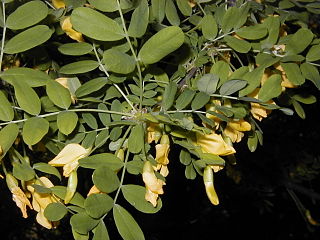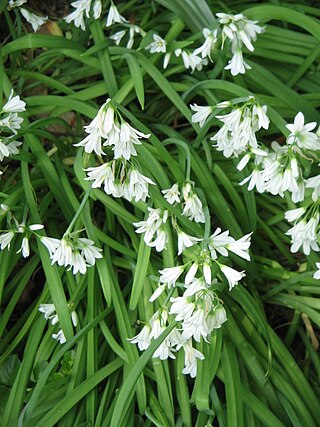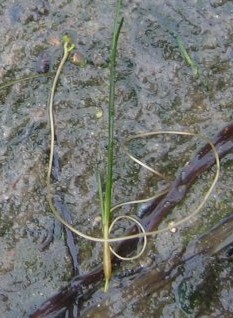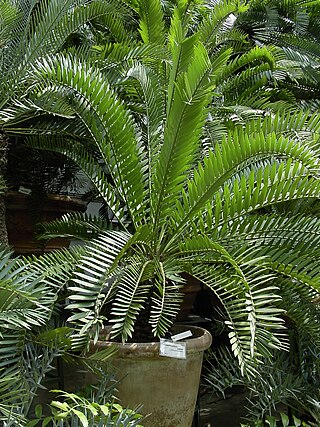
The International Union for Conservation of Nature (IUCN) Red List of Threatened Species, also known as the IUCN Red List or Red Data Book, founded in 1964, is an inventory of the global conservation status and extinction risk of biological species. A series of Regional Red Lists, which assess the risk of extinction to species within a political management unit, are also produced by countries and organizations.

Salix purpurea, the purple willow, purpleosier willow, or purple osier, is a species of willow native to most of Europe and western Asia north to the British Isles, Poland, and the Baltic States.

Grevillea, commonly known as spider flowers, is a genus of about 360 species of evergreen flowering plants in the family Proteaceae. Plants in the genus Grevillea are shrubs, rarely trees, with the leaves arranged alternately along the branches, the flowers zygomorphic, arranged in racemes at the ends of branchlets, and the fruit a follicle that splits down one side only, releasing one or two seeds.

Hesperocyparis bakeri, previously known Cupressus bakeri, with the common names Baker cypress, Modoc cypress, or Siskiyou cypress, is a rare species of western cypress tree endemic to a small area across far northern California and extreme southwestern Oregon, in the western United States.

Jubaea is a genus of palms with one species, Jubaea chilensis, commonly known in English as the Chilean wine palm or Chile cocopalm, and palma chilena in Spanish. It is native to southwestern South America and is endemic to a small area of central Chile between 32°S and 35°S in southern Coquimbo, Valparaíso, Santiago, O'Higgins, and northern Maule regions.

An IUCN Red List Critically Endangered species is one that has been categorized by the International Union for Conservation of Nature as facing an extremely high risk of extinction in the wild. As of December 2023, of the 157,190 species currently on the IUCN Red List, 9,760 of those are listed as Critically Endangered, with 1,302 being possibly extinct and 67 possibly extinct in the wild.

Rhododendron viscosum, the swamp azalea, clammy azalea or swamp honeysuckle, is a species of flowering plant in the heath family Ericaceae. This deciduous shrub, growing to 2.5 m (8.2 ft) tall and broad, is native to the eastern United States. It has rounded matt green leaves. In early summer it produces funnel-shaped white flowers flushed pink. The flowers have prominent stamens and are strongly fragrant.

Caragana arborescens, the Siberian peashrub, Siberian pea-tree, or caragana, is a species of legume native to Siberia and parts of China and neighboring Mongolia and Kazakhstan. It was taken to the United States by Eurasian immigrants, who used it as a food source while travelling west. In some areas of the United States it is considered an invasive species. Introduced on the Canadian prairies in the 1880's, the hardy caragana provided shelter-belts, wildlife habitat, nitrogen fixation, and windbreaks to prevent soil erosion and snow drifting.

Allium triquetrum is a bulbous flowering plant in the genus Allium native to the Mediterranean basin. It is known in English as three-cornered leek or three-cornered garlic, in Australia as angled onion, and in New Zealand as onion weed. Both the English name and the specific epithet triquetrum refer to the three-cornered shape of the flower stalks.

Richetia acuminatissima is a species of tree in the family Dipterocarpaceae. It is endemic to Borneo and threatened by habitat loss.
Richetia alutacea is a species of tree in the family Dipterocarpaceae. It is endemic to Borneo, where it is confined to Sarawak.

Richetia faguetiana is a species of plant in the family Dipterocarpaceae. Along with other species in the genus Shorea, it is also known as the yellow meranti. It is native to Borneo, the Malay Peninsula, and Thailand. It is the tallest flowering plant, and third tallest living tree species, after the sequoia and Himalayan cypress, with the largest specimen measuring 100.7 m (330 ft) in height.

Shorea peltata is a species of plant in the family Dipterocarpaceae.
Shorea richetia is a species of plant in the family Dipterocarpaceae. It grows as a canopy tree, to 40 metres (130 ft) in height. It is endemic to Borneo, where it has been recorded in protected areas, including Kubah National Park in Sarawak.

Mangifera indica, commonly known as mango, is an evergreen species of flowering plant in the family Anacardiaceae. It is a large fruit tree, capable of growing to a height of 30 metres. There are two distinct genetic populations in modern mangoes – the "Indian type" and the "Southeast Asian type".

Myriophyllum sibiricum is a species of water milfoil known by the common names shortspike watermilfoil, northern watermilfoil, and Siberian water-milfoil. It is native to Russia, China, and much of North America, where it grows in aquatic habitat such as ponds and streams. It generally grows over a meter long, its green stem drying white. It is lined with whorls of fanlike green leaves divided into many narrow, feathery lobes.

Ruppia cirrhosa is a species of aquatic plant known by the common names spiral ditchgrass and spiral tasselweed. It is native to north Africa, South Africa and parts of Europe, where it grows in freshwater bodies, such as lakes. It is a thread-thin, grasslike perennial herb which grows from a rhizome anchored in the wet substrate. It produces a long, narrow inflorescence tipped with two tiny flowers. As the fruit develops the peduncle of the inflorescence curls into a neat spiral.

Encephalartos afer, commonly known as the Eastern Cape dwarf cycad, is a species of cycad in the genus Encephalartos. It is a near threatened species native to South Africa.

Afzelia quanzensis is a species of tree native to sub-Saharan Africa. It ranges from Somalia and Democratic Republic of the Congo to South Africa. It is a protected tree in South Africa.
Richetia angustifolia is a tree in the family Dipterocarpaceae, native to Borneo. The specific epithet angustifolia means 'narrow-leaved'.

















